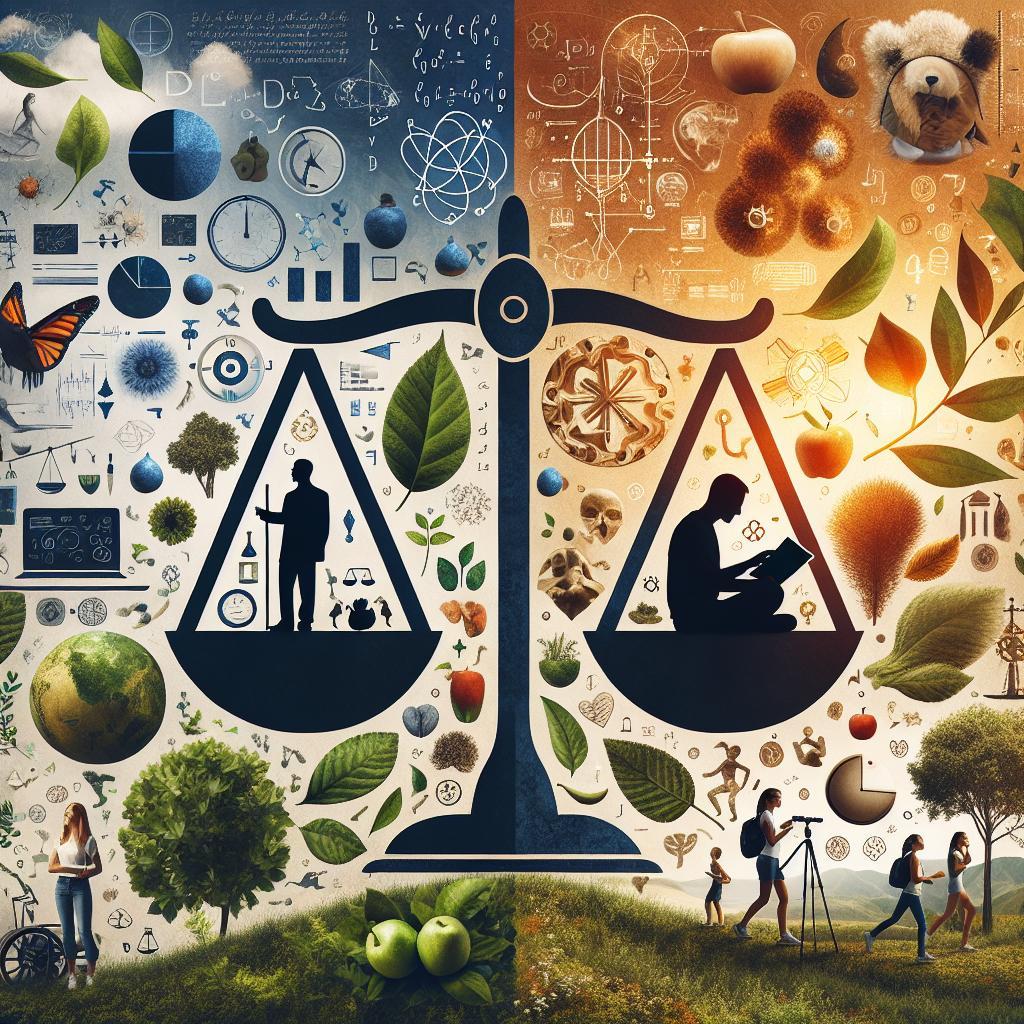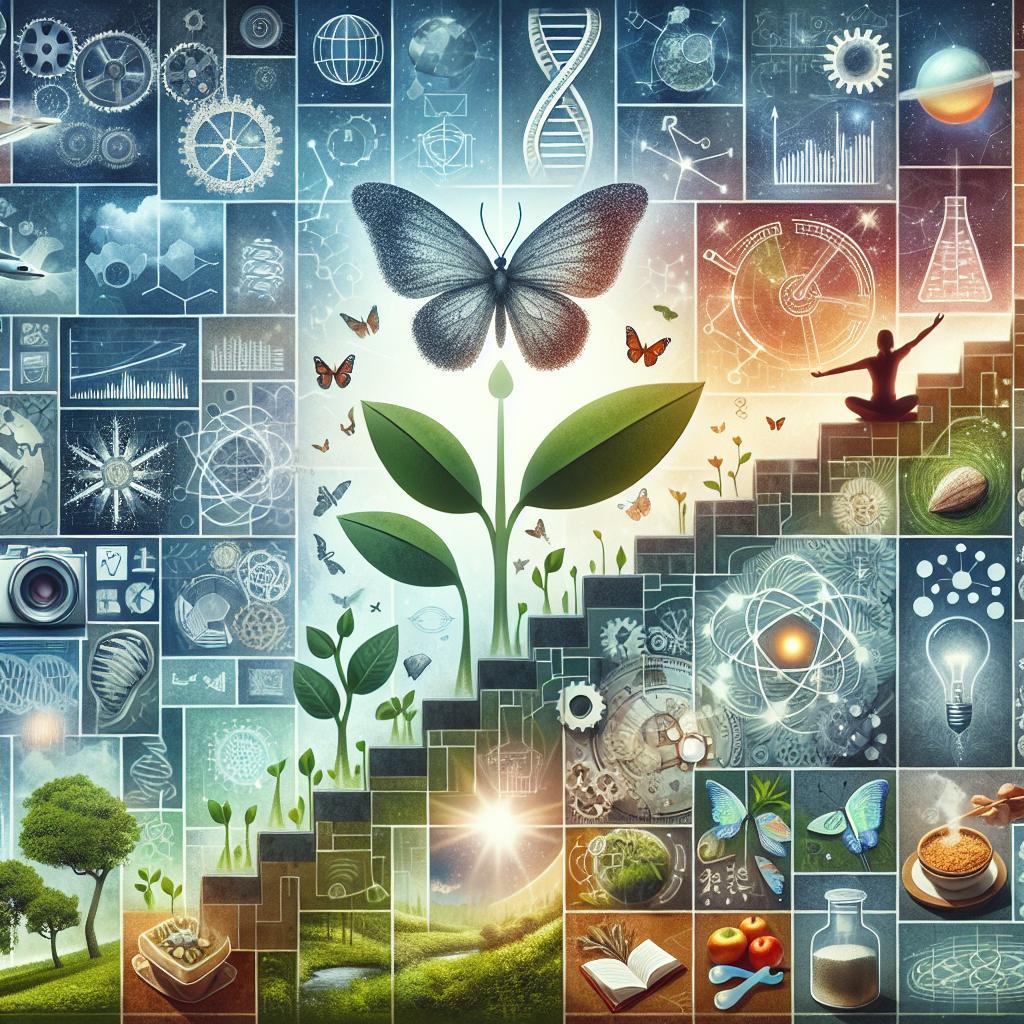Stress Management Techniques

In the symphony of life, stress often plays the discordant note that disrupts our harmony. Imagine waking up to a cacophony of responsibilities, deadlines, and unforeseen challenges. Whether you’re a student juggling exams, a professional navigating workplace turbulence, or a parent managing the myriad demands of family life, stress is the uninvited guest that frequently overstays its welcome. Yet, hidden within this turbulent chaos are the keys to tranquility, waiting to be discovered. This article embarks on a journey through the serene landscapes of stress management techniques, where ancient wisdom meets modern science, offering you practical tools to transform life’s relentless tension into a melody of calm and control.
Table of Contents
- Practical Mindfulness for Everyday Calm
- Harnessing the Power of Physical Exercise
- Emerging Technologies for Stress Relief
- The Art of Setting Boundaries
- Nutritional Strategies for Reducing Stress
- Breathing Techniques to Instantly Alleviate Tension
- Q&A
- In Conclusion

Practical Mindfulness for Everyday Calm
Engaging in practical mindfulness techniques can vastly improve our daily experiences and bring a sense of calm amidst the chaos. Here are a few practices that can be seamlessly integrated into your everyday routine:
- Breath Awareness: Take a few minutes throughout your day to focus solely on your breathing. Feel the rise and fall of your chest, and let the rhythm guide you to a state of tranquility.
- Mindful Eating: Transform your meals into a sensory experience. Savor each bite, notice the flavors, and appreciate the nourishment.
- Body Scan: Before bed, practice a body scan meditation to relax and release any tension. Start from the toes and work your way up to the head, acknowledging any areas of discomfort and letting go.
To provide a quick reference, here’s a summarized table of these techniques:
| Technique | Method | Benefit |
|---|---|---|
| Breath Awareness | Focus on breathing | Calms the mind |
| Mindful Eating | Enjoy each bite | Enhances gratitude |
| Body Scan | Check body tension | Promotes relaxation |

Harnessing the Power of Physical Exercise
Engaging in physical exercise is a powerful tool for managing stress. When you exercise, your body produces endorphins, which act as natural painkillers and mood elevators. This surge in endorphins not only helps you feel more relaxed but also enhances the overall sense of wellbeing. Physical activities like running, swimming, yoga, and even dancing provide an excellent outlet for stress. These activities help to reduce anxiety, improve sleep, and boost self-esteem, creating a positive cycle of reduced stress and enhanced mental health.
- Running: Helps clear the mind and releases pent-up tension.
- Swimming: The soothing effect of water combined with rhythmic breathing is extremely calming.
- Yoga: Combines physical activity with meditation, aiding in mind and body relaxation.
- Dancing: Elevates mood through music and movement, making it an enjoyable way to de-stress.
| Activity | Stress Relief Benefit |
|---|---|
| Running | Clears mind, releases tension |
| Swimming | Calming effect, rhythmic breathing |
| Yoga | Meditative, mind-body relaxation |
| Dancing | Mood elevation through music and movement |

Emerging Technologies for Stress Relief
In our rapidly advancing world, new technologies are emerging to help manage stress in innovative ways. One such technology is **Virtual Reality (VR)**, which offers immersive experiences that can transport users to serene environments, fostering a sense of calm and relaxation. Virtual reality can simulate activities such as swimming in the ocean, walking through a forest, or even flying above picturesque landscapes. These experiences provide a temporary escape from reality, allowing individuals to focus on mindfulness and reduce stress levels. Additionally, **Wearable Devices** like smartwatches and fitness trackers are now equipped with features such as guided breathing exercises, stress level monitoring, and sleep quality analysis, providing real-time feedback and personalized recommendations to users.
**AI-Powered Personal Assistants** are making significant strides in stress management by offering customized advice and behavioral therapy. These systems analyze user data to provide suggestions tailored to an individual’s stress triggers and coping mechanisms. **Biofeedback Therapy** is another emerging technology that utilizes sensors to measure physiological functions such as heart rate, muscle tension, and skin conductivity. By making users aware of their bodily responses to stress, biofeedback helps them learn how to control these functions consciously. Let’s take a quick look at some of these technologies and their benefits:
| Technology | Benefits |
|---|---|
| Virtual Reality (VR) | Immersive, calming experiences, reduces anxiety |
| Wearable Devices | Real-time stress monitoring, guided breathing exercises |
| AI-Powered Assistants | Personalized stress management advice, behavioral therapy |
| Biofeedback Therapy | Awareness of physiological responses, control over stress reactions |

The Art of Setting Boundaries
In today’s fast-paced world, carving out personal space is not just beneficial, but essential for mental well-being. Establishing and maintaining boundaries can be seen as an art form that requires careful attention and practice. Skilfully crafted boundaries can help maintain a balance between work, relationships, and personal time. Whether it’s learning to say “no” without guilt or setting specific times for work-related communications, these boundaries can help you preserve your energy and focus on what truly matters to you. Some useful tips include:
- Communicate Clearly: Express your limits concisely and assertively to avoid misunderstandings.
- Identify Priorities: Know what’s important and allocate your time and resources accordingly.
- Use Technology Wisely: Set boundaries with digital devices to avoid burnout and constant connectivity.
One of the keys to effective boundary-setting is consistency. This can be challenging but is critical in ensuring that your boundaries are respected. Regularly reviewing and adjusting your boundaries can also be beneficial as life circumstances change. Effective boundary-setting can manifest in various ways, whether in professional environments, personal relationships, or self-care routines. Here’s a quick comparison on methods to implement boundaries in different areas:
| Area | Boundary Method |
|---|---|
| Work | Set specific work hours and stick to them. |
| Personal | Ensure alone time for hobbies and reflection. |
| Relationships | Communicate needs and limits effectively. |

Nutritional Strategies for Reducing Stress
Incorporating specific nutritional strategies into your daily routine can dramatically reduce stress levels. Here are some essential dietary adjustments that could help you manage stress more effectively:
- **Eat more Omega-3 rich foods:** Incorporate foods like salmon, walnuts, and chia seeds to help reduce anxiety and depression.
- **Opt for complex carbohydrates:** Complex carbs like whole grains, fruits, and vegetables can stabilize blood sugar and elevate serotonin levels.
- **Stay hydrated:** Proper hydration is crucial for maintaining optimal brain function and a positive mood.
To further support your stress reduction efforts, consider these nutrient-packed foods:
| Food | Nutrient | Benefit |
|---|---|---|
| Spinach | Magnesium | Reduces fatigue and irritability |
| Yogurt | Probiotics | Boosts gut health and mood |
| Dark Chocolate | Flavonoids | Lowers stress hormone levels |

Breathing Techniques to Instantly Alleviate Tension
One of the most effective ways to combat stress is through specific breathing techniques. **Deep Breathing** is a simple yet powerful method that can be done anywhere. Start by inhaling deeply through your nose, allowing your lungs to fill completely, then slowly exhale through your mouth. Visualize your tension melting away with each breath. Practice this for a few minutes and notice how your body begins to relax. This technique not only reduces stress but also improves focus and clarity.
Another powerful technique is the **4-7-8 Breathing** method. To practice this, sit or lie down in a comfortable position. Close your eyes, then breathe in quietly through your nose for a count of four. Hold your breath for a count of seven, and exhale completely through your mouth for a count of eight. Repeat the cycle three to four times. This method activates the parasympathetic nervous system, which promotes a state of calm. You can track your sessions and effects using a simple table:
| Date | Duration | Feeling (1-10) |
|---|---|---|
| October 10 | 5 minutes | 5 |
| October 11 | 7 minutes | 7 |
Q&A
Q&A: Exploring Stress Management Techniques
Q: What is stress, and why do we need to manage it?
A: Stress is a natural physical and emotional response to events that disrupt our balance. It can be triggered by both positive and negative experiences, ranging from work deadlines to significant life changes. Managing stress is essential because, while short-term stress can boost alertness and performance, chronic stress can lead to serious health issues such as anxiety, depression, and cardiovascular problems.
Q: Can you name some effective stress management techniques?
A: Certainly! There are numerous stress management techniques, but some of the most effective include:
-
Mindfulness Meditation: Practicing being present in the moment and observing your thoughts without judgment can help reduce stress and enhance emotional well-being.
-
Physical Exercise: Regular activity, whether it’s jogging, yoga, or even a brisk walk, can release endorphins, which are natural mood lifters.
-
Deep Breathing Exercises: Techniques such as diaphragmatic breathing can calm the nervous system, reducing the stress response.
-
Time Management: Organizing your schedule to prioritize activities can prevent the overwhelm that comes with a chaotic to-do list.
-
Healthy Lifestyle Choices: Maintaining a balanced diet, getting adequate sleep, and avoiding excessive alcohol or caffeine can improve your resilience to stress.
-
Social Support: Talking with friends, family, or a therapist can provide emotional support and practical solutions to stressors.
Q: How does mindfulness meditation specifically help with stress?
A: Mindfulness meditation involves paying attention to the present moment with openness, curiosity, and without judgment. This practice can reduce stress by breaking the cycle of negative thinking. It encourages a state of relaxation and increases self-awareness, which can help you understand and manage your stress triggers more effectively.
Q: Are there any quick stress-relief techniques for use in emergencies?
A: Absolutely! For immediate relief, consider these quick techniques:
-
Progressive Muscle Relaxation: Tense and then slowly release each muscle group in the body, from toes to head. This can alleviate immediate physical tension.
-
Visualization: Close your eyes and imagine a serene, peaceful place. Engage all your senses as you visualize, which can create a calming effect.
-
Short Breaks: Step away from the stressful situation, even if just for a few minutes. A quick walk outside or a change of scenery can provide a mental reset.
-
Grounding Techniques: Focus on your immediate environment by noticing five things you can see, four things you can touch, three things you can hear, two things you can smell, and one thing you can taste. This can shift focus away from stress and latch onto the present moment.
Q: What role does physical exercise play in managing stress?
A: Physical exercise serves multiple roles in stress management. It can:
- Release Endorphins: These are natural chemicals in the brain that act as painkillers and mood elevators.
- Decrease Stress Hormones: Regular activity lowers levels of the body’s stress hormones, such as adrenaline and cortisol.
- Improve Sleep: Exercise can enhance sleep quality, which is often negatively affected by stress, contributing to better overall health.
- Provide a Break: Physical activity offers a distraction from daily stressors and can break the cycle of worry.
Q: Can dietary choices impact stress levels?
A: Yes, dietary choices can significantly impact stress levels. Consuming a balanced diet rich in fruits, vegetables, lean proteins, and whole grains can ensure your body has the nutrients it needs to handle stress. Conversely, excessive consumption of caffeine, sugar, and processed foods can exacerbate stress and lead to mood swings. Staying hydrated and mindful of meal timing also contributes to better management of stress.
Q: How can someone develop a personalized stress management plan?
A: Developing a personalized stress management plan involves:
-
Identifying Triggers: Recognize specific situations or thoughts that cause stress.
-
Exploring Techniques: Experiment with various stress-reduction techniques to see what works best for you.
-
Setting Goals: Aim for realistic, achievable goals in managing stress, such as daily meditation practice or weekly exercise sessions.
-
Monitoring Progress: Keep track of what’s effective and re-evaluate your strategies periodically.
-
Seeking Support: Don’t hesitate to reach out to friends, family, or professionals for advice and encouragement.
Q: What is the most important takeaway when it comes to managing stress?
A: The most important takeaway is that stress management is not a one-size-fits-all solution. It involves a holistic approach and a combination of techniques tailored to individual needs and lifestyles. Regularly practicing these techniques can build resilience, enhance overall well-being, and lead to a more balanced, fulfilling life.
In Conclusion
In the intricate tapestry of life, stress is but one thread—intertwined, yet not overpowering. We’ve traversed through the labyrinth of stress management techniques, illuminating paths from mindfulness meditations to the rhythmic cadence of physical exercise. Each method, a tool for equilibrium, is an invitation to reclaim serenity amidst the clamor of existence.
Remember, the journey to balance is uniquely yours, a mosaic of personalized strategies waiting to be discovered and refined. Embrace these techniques as lifelong companions, guiding you towards a horizon where tranquility and resilience coalesce. As you navigate through the ebb and flow of daily life, may these insights empower you to transform moments of tension into opportunities for growth.
In the grand narrative of your well-being, let stress be not an antagonist, but a silent teacher. And as the final words of this chapter fade, may you find harmony, strength, and an enduring sense of peace.

 Introduction to Excellence of Teaching
Introduction to Excellence of Teaching  Bachelor of Education in Secondary Teaching
Bachelor of Education in Secondary Teaching  Bachelor of ICT With Education
Bachelor of ICT With Education 












Responses